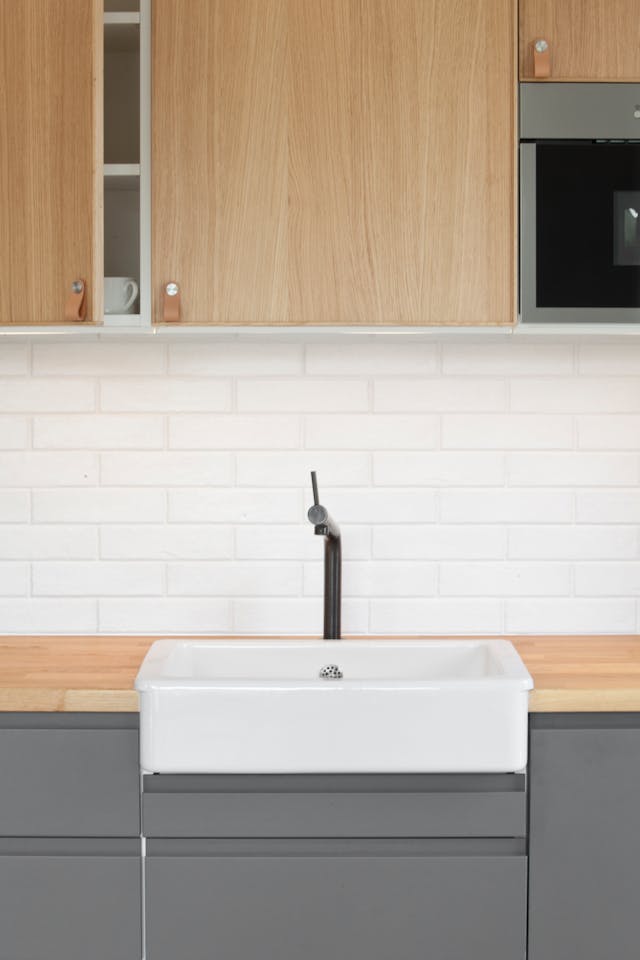When remodeling or building a new kitchen, many decisions must be made regarding each component, including the kitchen sink. These include the material, style, size, shape, depth of the bowl, number of bowls, and mounting type.
How the kitchen sink is installed will impact cleaning, cooking, and the kitchen’s overall look; it makes more of a difference than many consider.
Each mounting type has advantages and downsides. Visit https://www.mymove.com/home-inspiration/kitchen/kitchen-sinks-choose-best-style-needs/ to learn how to choose the best sink style.
Budget, however, doesn’t necessarily have to be a major factor. Mounting types come in a broad range of prices. The mounting type you choose will primarily be based on the kitchen’s style and the cupboard aesthetic.
Mounting Types and How to Choose the One for You
While the kitchen is “the heart of the home,” the sink is where everyone gathers. When remodeling or renovating the space, so many decisions go into making it a room that meets your needs, with a primary decision being how to choose the ideal kitchen sink.
You need to consider not only material, number of bowls, color, size, and shape but also the mounting type. Each sink style has its own advantages and downsides to consider.
Read here for tips on choosing the best sink designs for the kitchen. Then, follow along for some of the common choices in mounting types to inform and help with the decision-making process.
Top mount
The most common style is the top mount, also referred to as the self-rimming or drop-in. This sink is installed from above, where the countertop has a hole cut to fit the sink following a template. The sink manufacturer offers the template for a precision cut.
Once the cut is made, the sink can be simply dropped into the space from the top. Silicone caulking will be used along the sink rim between the counter and the sink to prevent water seeping.
The top-mount sink is ideal for those handling much of the remodeling themselves. Installation requires no particular skill set except for precision countertop cutting.
The downside of the rim can mean swiping messes into the sink won’t be possible. Instead, debris will gather in the rim, requiring added maintenance to avoid mildew.
The undermount
An undermount sink is an option for those who prefer a more modern mounting style. It’s attached beneath the countertop and supported by the base cupboards.
When cutting the countertop for this sink, the edge needs to be precise and stunning, meaning it should be done by a high-quality fabricator. The undermount model offers not only a modern, sleek aesthetic but also simple cleanup for messes and spills since you can readily swipe directly into the sink.
The installation is not as easy as a top mount, so it is recommended that a professional handle it. This allows for clean lines and contemporary appeal.
Flush-mount
The flush-mount sink, also known as a tiled edge, is supported by the base cupboard while sitting flush with the counters. The bowl usually has a few extra inches around it.
Grout is used between the counter and the sink but usually provides a smooth surface along the countertop so spills can swipe directly into the sink. Some favored manufacturers with high-quality flush-mount models offer a “seamless, vanishing edge.”
With these, the sink’s edge is only a few millimeters wide. The grout line is virtually invisible, and the sink is mounted perfectly flush to the counter. These sinks require a special skillset and precision cut, making it wise to use a professional for the installation.
Integrated sink
Integrated means that the sink consists of the same material as the countertop; in fact, the sink and the counter are often one piece fused together in the factory. Only a few manufacturers offer these styles, making them challenging to find and often expensive.
These are more common in bathrooms than in kitchens. With this model, no grout is used, making cleanup easy and keeping the area free from mildew and germs.
However, if you want a particular material for your sink, you’ll need to consider whether it’s available for a countertop like stainless steel and if that will be appealing in such a grand scheme.
Farmhouse styles
The exposed front “apron” or sink face readily identifies a farmhouse kitchen sink. These are large and often a ceramic material but can also be found in a copper or stainless-steel material.
These are installed on top of a cupboard and usually tucked under the countertop’s edge so debris can be swiped directly into the sink. A small grout edge is used and will need routine maintenance.
These sinks need larger base cupboards with distinct cutouts, making size a primary consideration when installing. DIY installation is discouraged with the farmer’s model; instead, opt to invest in a qualified professional to ensure a quality job.
The apron sink is common in a traditional farmhouse-style kitchen. However, the model is seeing a resurgence and is becoming a staple in more modern spaces.
Choose A Mounting Type Based on Your Lifestyle
Whatever mounting type you decide on, it should work for your lifestyle. If you are a cooking enthusiast, investing in a seamless integrated sink will allow the simplest cleaning and maintenance.
If you’re more of a take-out person who only uses the kitchen to grab a cup of water, you might not be picky about the maintenance or the aesthetic, opting for a top-mount.
Shopping around and comparing options should be prioritized in any event to ensure you consider the advantages and downsides of each before committing to one.
Final Thought
While the kitchen is considered “the heart of the home,” the kitchen sink is where loved ones and guests typically congregate when there’s a dinner or social gathering. The mounting type should function according to this lifestyle.
If you entertain frequently at home, less maintenance and easy cleanup are always appreciated. However, if you rarely use the kitchen except to grab a quick drink, you might be most concerned about ease of installation and simple functionality.
The keyword in each scenario is ease. When reaching out to a professional for guidance on the best mounting type for your lifestyle, efficiency, functionality, ease, and appeal should be your focus.


